
Foods to Include For Blood Pressure Control

Can you eat your way to lower blood pressure? Of course not ... don't be silly.
That said, the foods you eat actually do influence your blood pressure readings. If you consistently consume foods high in sodium, low in potassium and magnesium, your blood pressure will be more likely to spike.
In this resource, we will talk about the foods that can help move your cardiovascular health in a healthy direction! Below you'll find the following topics:
- General guidelines
- High potassium foods
- High magnesium foods
- The role of olive oil
General Guidelines
One of the biggest dietary determinants determining your blood pressure is the ratio of sodium to potassium and magnesium in your foods. In other words, having foods higher in sodium and lower in potassium or magnesium is a bad idea.
That's why we're advised to cut our sodium consumption because it lowers the ratio of SODIUM to POTASSIUM & MAGNESIUM in your body.
You don't have to micromanage the minutia of your dietary intake to optimize the ratio of these minerals. In general, if you decrease the amount of processed foods and foods prepared away from your home, sodium will decrease just as potassium & magnesium increase - without you even trying!
Limit your alcohol consumption to one to two drinks per day. HINT: One drink equals 12 ounces of beer, 5 ounces of wine, or 1.5 ounces of 80-proof liquor.
When choosing your meats, lean on fish and poultry. And when having pork, try choosing actual cuts versus highly salted processed pork products. Have red meat on occasion and, when you do have it, choose grass-fed.
Avoid as much as possible (limit to only on occasion)
- Deep fried foods
- Corn-fed beef
- Processed foods loaded with additives and preservatives (refer to list below)
- High sugar drinks
Have in moderation (vary these foods throughout the week)
- Grass fed beef
- Pork
- Lamb
- Poultry
- Fish
- Eggs
- Dairy (milk, butter, yogurt, cheese)
OK to have on a daily basis
- Fruits (Especially ones with potassium refer to list below)
- Vegetables (Especially ones with potassium refer to list below)
- Beans (any kind)
- Whole grains (rice, pasta, breads)
- Nuts (lightly salted or unsalted)
Your Just Desserts
It is ok to have desserts, but just make sure you choose ones that are made with real ingredients. Focus on portion control by taking a smaller piece, taking your time with it, and focusing on the flavor. This will help you control your portions.
Top 10 Foods High in Potassium
You need potassium. It's critical for the low level, metabolic “blocking and tackling” that happens every second in every cell you have.
If you don't have enough, you can get fatigue, irritability, and higher blood pressure. Don't try to get your potassium from pills because you can get too much. However, when it comes in the form of food, you cannot overdo it.
The recommended daily intake for potassium is 3.5 grams. The foods below are the world's top natural sources of potassium. Your mission, should you choose to accept it, is to incorporate these foods into your meals as often as you can.
Between these and the high magnesium foods, you should have a lot of delicious meals to choose from!
White Beans

The unsung hero of the cupboard.
• 1 cup cooked = 29% of the Recommended Daily Allowance (RDA)
Other Beans High in Potassium:
- Soy (28% RDA)
- Lima (28% RDA)
- Kidney (20% RDA)
- Pinto (18% RDA)
Dark Leafy Greens (Spinach)

• 1 cup cooked = 24% of RDA
Other Greens High in Potassium:
- Swiss Chard (27% RDA)
- Kale (8% RDA)
- Collards (6% RDA)
- Pinto (18% RDA)
Baked Potatoes (With Skin)

• 1 cup cooked = 24% of RDA
Other Greens High in Potassium:
- Medium Potato = 26% of RDA
- Medium sweet potato = 15% of RDA
Dried Apricots

• 1/2 cup = 22% of RDA
Other Dried Fruits High in Potassium:
- Peaches (22% RDA)
- Prunes (20% RDA)
- Raisins (18% RDA)
Acorn Squash (Baked)
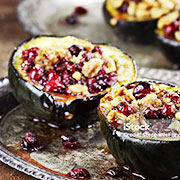
• 1 cup cubed = 26% of RDA
Other Squash High in Potassium:
- Hubbard (21% RDA)
- Butternut (17% RDA)
- Zucchini (14% RDA)
- Winter Squash (10% RDA)
Yogurt (Greek)
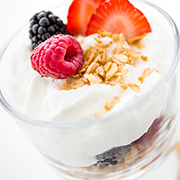
• 1 cup = 18% of RDA
Salmon

• 3oz fillet = 15% of RDA
Other Fish High in Potassium:
- Pompano (15% RDA)
- Lingcod (14% RDA)
- Halibut (13% RDA)
- Yellowfin Tuna (13% RDA)
- Anchovies (12% RDA)
- Mackerel (10% RDA)
- Herring (10% RDA)
- Most other fish at an average of 10% RDA
Avocados

• Medium Avocado = 28% of RDA
White Mushrooms

• 1 cup sliced = 12% of RDA
Other Mushrooms High in Potassium:
- Portabella (9% RDA)
- Brown or Crimini (9% RDA)
- Enoki (7% RDA)
- Shiitake (5% RDA)
- Maitake (4% RDA)
Bananas

• Medium Banana = 12% of RDA
Top 10 Foods High in Magnesium
How many people, in their spare time, give a lot of thought to, you know, magnesium? My guess is that it's not a whole lot. Despite the neglect, it is still an enormously important mineral that you need to keep your muscles and nerves working properly.
Your immune system relies on magnesium, as does your heart and bones, via over 250 chemical reactions across your entire body. That's why, if you don't have it you can get muscle spasms, diabetes, high blood pressure, anxiety, migraines, osteoporosis, and cerebral infarction.
The recommended daily value is now at 400mg. Take a look at these foods that are naturally high in magnesium, and incorporate them in to the foods you prepare for your family each week. Your 250 chemical reactions will thank you!
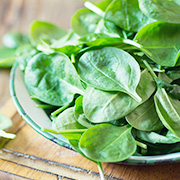
Dark Leafy Greens (Such as Raw Spinach)
• 1 cup raw = 20% of RDA
• 1 cup cooked = 39% of RDA
Other Greens High in Magnesium:
- Swiss Chard (38% RDA)
- Kale (19% RDA)

Oily Fish Such as Mackerel
• Per 3oz Fillet = 21% of RDA
Other Fish High in Magnesium:
- Pollock (18% RDA)
- Turbot (14% RDA)
- Tuna (14% RDA)

Pumpkin Seeds
• 1/2 Cup = 152% of RDA
Other Nuts and Seeds High in Magnesium:
- Sesame Seeds (63% RDA)
- Brazil Nuts (63% RDA)
- Almonds (48% RDA)
- Cashews (44% RDA)
- Pine nuts (43% RDA)
- Mixed Nuts (39% RDA)
- Peanuts (31% RDA)
- Pecans (17% RDA)
- Walnuts (16% RDA)
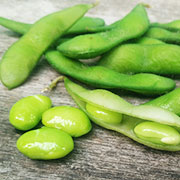
Soy Beans
• 1 Cup Cooked = 37% of RDA
Other Beans and Lentils High in Magnesium:
- White Beans (28% RDA)
- French Beans (25% RDA)
- Black-eyed Peas (23% RDA)
- Kidney Beans (21% RDA)
- Chickpeas (Garbanzo) (20% RDA)
- Lentils (18% RDA)
- Pinto Beans (16% RDA)

Avocados
• 1 Medium Avocado = 15% of RDA

Bananas
• 1 Medium Banana = 8% of RDA
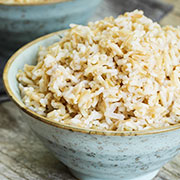
Whole Grains (Brown Rice)
• 1 Cup Cooked = 21% of RDA
Other Whole Grains High in Magnesium:
- Quinoa (30% RDA)
- Millet (19% RDA)
- Bulgur (15% RDA)
- Buckwheat (13% RDA)
- Wild Rice (13% RDA)
- Whle Wheat Pasta (11% RDA)
- Barley (9% RDA)
- Oats (7% RDA)

Yogurt
• 1 Cup = 12% of RDA
Other Dairy Foods High in Magnesium:
- Goat Cheese (Hard) (14% RDA)
- Mozzarella (8% RDA)

Dried Figs
• 1/2 Cup = 13% of RDA
Other Dried Fruit High in Magnesium:
- Prunes (11% RDA)
- Apricots (10% RDA)
- Dates (8% RDA)
- Raisins (7% RDA)

70% Dark Chocolate
• 1 Square (29g) = 24% of RDA
The Role of Olive Oil in Blood Pressure Control
It's clear that people who consume more extra virgin olive oil (EVOO), also have lower blood pressure. For example, after 3 months on the olive oil rich Mediterranean diet, ~7500 people in one research study experienced a reduced the risk of heart attack, stroke, or death from cardiovascular disease by an amazing 30 percent.
How much do you need?
Well, in this massive study, subjects had EVOO on their food, their salads, and when cooking: just about 4 tablespoons per day. The key is to be consistent, and find ways to incorporate EVOO whenever you can.
Why is it so good for blood pressure?
This study answers that question, showing that the Mediterranean diet's impact on arterial blood pressure comes down to the way the olive oil, vegetables, and fruit protect and nourish the blood vessels.
Olive oil can reduce the stiffness of the vessels, making them more elastic and “stretchy”. Stretchier arteries respond to pressure spikes by expanding with them, not resisting them. This means that the added pressure is less likely to break through the walls, creating a bleeding (hemorrhagic) stroke.
Bottom Line
Adding EVOO to your diet at every opportunity is good for flavor, and great for your heart health in every way. This becomes the cardiovascular maintenance food that you should take as if it were a (very delicious) vitamin!